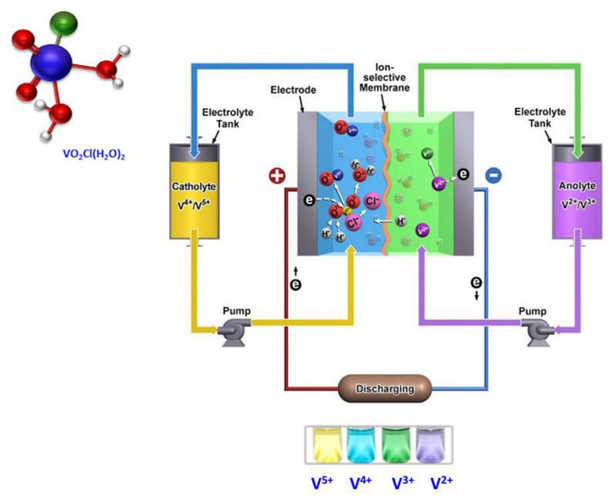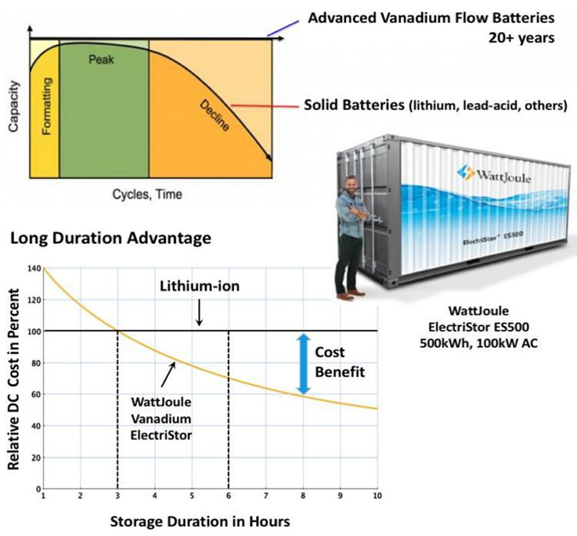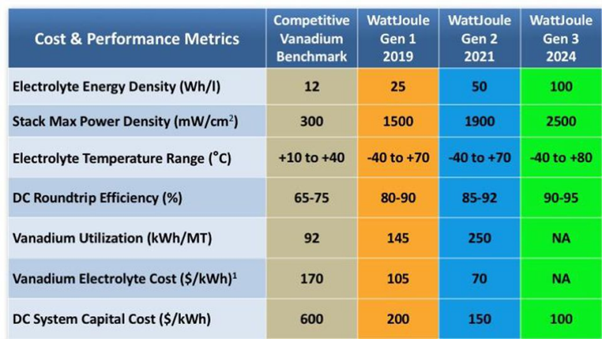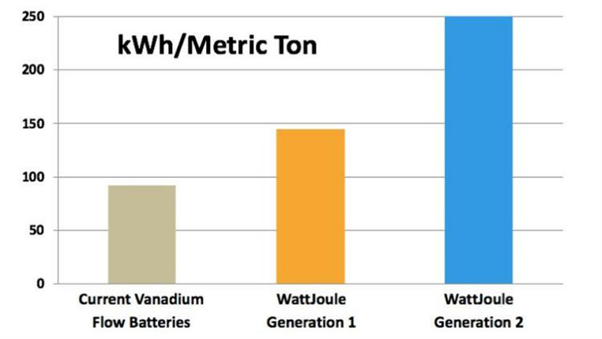Submission BCS
Vanadium batteries usage instead of Li-ion Batteries
Submission Date & Time: 2021-10-19 03:07:20
Event Name: NMO S4 Sprint One
Solution Submitted By: Vishnu Tapria
Assignment Taken
Features (USP’s) which will be present in the vehicle and how those features will help salesCase Understanding
Lithium-ion battery technology has evolved over 40 years, powering everything from the smallest electronic devices to Tesla's 100MW battery farm in southern Australia. However, utility-scale Li-ion batteries are uncommon. Pumped hydro accounts for 99 percent of grid storage today, a solution that will always be constrained by geographical and environmental constraints. According to Jim Conca, for utility-scale chemical batteries to take off, a new technology is required, and that technology is the Vanadium Flow Battery. He explains how the V-flow battery outperforms Li-ion and other solid batteries in utility-scale applications. They're more secure, scalable, and long-lasting, and there's much more Vanadium than Lithium in the Earth’s crust. But the problem is that how to store more electricity through improved chemistry, and improved cell and stack designs. And, of course, lowering the cost of that Vanadium extraction. There is a pathway to making V-flow batteries less than half the cost of Li-ion per kWh The efforts to bring our power generation and electrical grid into the twenty-first century are multifaceted. It requires a new generation mix of low-carbon sources such as hydro, renewables, and nuclear, low-cost carbon capture methods, and ways to make the grid smart. Image: Li-ion Batteries Vs Vanadium Batteries Unlike solid batteries, like lithium-ion or lead-acid, that begin degrading after a couple of years, are fully reusable over semi-infinite cycles and do not degrade, giving them a very, very long life. V-flow batteries also become more cost effective the longer the storage duration and the larger the power and energy needs. SOURCE: WATTJOULE AND UET However, battery and storage technologies have struggled to keep up. And they are critical for any success in a carbon-constrained world that relies on intermittent sources such as solar and wind, or that is concerned about resilience in the face of natural disasters and malicious sabotage.BCS Solution Summary
The vanadium redox battery, also known as the vanadium-flow battery, is the most recent technology to emerge. These V-flow batteries can be quite large, making them ideal for industrial and utility-scale applications. They could never fit in an electric vehicle, so the Tesla battery is safe for the time being. However, for utility-scale applications, the V-flow battery outperforms Li-ion and any other solid battery. They're simply safer, more scalable, longer-lasting, and less expensive – less than half the price per kWh.Solution
Image: Market Share
The storage market could top $100 billion in less than ten years. SOURCE: WATTJOULE
It's not like we've been sitting around doing nothing. We just haven't had a lot of success. Battery technology is improving all the time. The inventor of the Li-ion battery, Jack Goodenough, recently announced a new fast-charging battery technology that uses a glass electrode instead of a liquid one, sodium instead of lithium, and may have three times the energy density of lithium-ion batteries.
In addition to batteries, we have other technologies for storing intermittent energy, such as thermal energy storage, which allows cooling to be created at night and stored for use during peak times the next day.
At the moment, the most common storage method is pumped hydro storage, which uses excess electricity to pump water up to a reservoir behind a dam. When there is a high demand for energy, the stored water is released through the dam's turbines to generate electricity.
Pumped hydro accounts for 99 percent of grid storage today, but its deployment is limited by geologic and environmental constraints.
We've also looked into other gravity-based energy storage systems, such as Advanced Rail Energy Storage, which uses excess wind and solar energy to move millions of pounds of rock uphill in special electric rail cars that then roll back downhill, converting gravitational potential energy to electricity that is then distributed to the grid.
However, utility-scale chemical battery storage is required to deal with the rapid intermittency of both generation (renewables) and demand (rapid changes in use throughout the commercial day). These must be extremely large while remaining stable and long-lasting.
Image: Storage Capacity
One of the major barriers preventing the widespread adoption of large-scale energy storage has been cost. WattJoule’s vanadium flow battery system lowers the cost by significantly increasing the energy stored for a given amount of vanadium. It also provides the vanadium almost free of charge. SOURCE: WATTJOULE
We now understand lithium ion batteries. They can pack a lot of energy storage into a small, light battery, making them the preferred battery in small electronics like laptops and cell phones.
However, Li-ion batteries have a short operating life and problems such as rapid heat generation. They will dominate the small-volume niches of personal devices and electric vehicles in the near future, but for the utility-scale commercial battery market, we need larger systems that last longer.
Vanadium Batteries
The vanadium redox battery, also known as the vanadium-flow battery, is the most recent technology to emerge. And the best one appears to be from WattJoule, especially given how much less expensive it is compared to other V-flow batteries.
V-flow batteries are fully containerized, nonflammable, compact, reusable over semi-infinite cycles, discharge 100% of stored energy, and do not degrade for more than 20 years. Vanadium is much more abundant in the Earth's crust than lithium, and we produce twice as much V as Li each year.
Image : Design of V Flow Batteries
V-flow batteries are fully containerised, nonflammable, reusable batteries, using 100% of the energy stored. They use the multiple valence states of vanadium to store and release charges. Energy is stored by providing electrons making V(2+,3+), and energy is released by losing electrons to form V(4+,5+) across the central redox flow cell. To increase energy just use large tanks. To increase power just use larger stacks. SOURCE: UET
The majority of batteries employ two chemicals that change valence (or charge or redox state) in response to electron flow, which converts chemical energy to electrical energy and vice versa. V-flow batteries store and release charges in a water-based electrolyte containing vanadium salts by utilising the multiple valence states of only vanadium.
V can exist in solution as several ions of varying charges, V(2+,3+,4+,5+), each with a different number of electrons surrounding the nucleus (see figure above). A higher positive charge is produced when there are fewer electrons. Energy is stored by supplying electrons to form V(2+,3+), and it is released by removing electrons to form V(4+,5+).
Flow batteries are made up of two liquid tanks that sit idle until they are needed. When the two solutions are pumped into a chemical reactor, they flow adjacent to each other past a membrane, generating a charge by moving electrons back and forth during charging and discharging.
Simply by using larger electrolyte storage tanks, this type of battery can provide nearly unlimited energy capacity. It can be left completely discharged for long periods of time with no negative consequences, making maintenance easier than with other batteries.
The high cost of the V has hampered the commercialization of vanadium flow battery systems. So you must either improve chemistry and cell and stack designs to store more electricity in the same amount of V, or you must store more electricity in the same amount of V. Or reduce the price of V.
Making Vanadium extraction cheaper:
"Working with our strategic partners, our proposed integrated, multi-metal extraction approach is the key to lowering vanadium prices," said Greg Cipriano, VP Business Development and Co-Founder of WattJoule. The traditional method of metal extraction is inefficient and wasteful. This simply does not make economic or environmental sense in the long run."
Image: Performance Comparision
Cost & performance metrics just keep getting better for V-Flow batteries, especially for WattJoule. SOURCE: WATTJOULE
Extraction of multiple metals from the vanadium-rich input source, whether fresh ore extracted from the ground or slag, used catalyst, or oily fly ash – all of which are considered industrial waste products – generates additional revenue. Non-vanadium metals such as iron, titanium, and nickel are then sold at market prices, thereby subsidising vanadium extraction.
There is plenty of oily fly ash and coal waste available. This subsidy has been found to significantly offset the cost of vanadium, and in some cases, it can even reduce the cost to zero.
In comparison, today's sale of vanadium into the highly competitive, cost-driven commodity metallurgical market is a one-time transaction.
These V-flow batteries can be quite large, making them ideal for industrial and utility scale applications. They could never fit in an electric vehicle, so the Tesla battery is safe for the time being. However, for utility-scale applications, the V-flow battery outperforms Li-ion and any other solid battery. They're simply safer, more scalable, longer-lasting, and less expensive – less than half the price per kWh.
Storing energy for the future is becoming increasingly important as power generation evolves, and we need to be more creative and cost-effective than we have been in the past. We have the tools – batteries, pumped storage, thermal – we just need to get them deployed quickly.
Conclusion
The vanadium redox battery, also known as the vanadium-flow battery, is the most recent technology to emerge. These V-flow batteries can be quite large, making them ideal for industrial and utility scale applications. They could never fit in an electric vehicle, so the Tesla battery is safe for the time being. However, for utility-scale applications, the V-flow battery outperforms Li-ion and any other solid battery. They're simply safer, more scalable, longer-lasting, and less expensive – less than half the price per kWh. Reference: https://energypost.eu/can-vanadium-flow-batteries-beat-li-ion-for-utility-scale-storage/Attached File Details





Comments
Article Type: Business Case Scenario, Case Study Solution Submission
Business Case Detail
Title:
Type:
Stream:
Zeal
Total Team Points: 54000
Trailblazers
Total Team Points: 0
Skribblers
Total Team Points: 52500
Power Rangers
Total Team Points: 39000
Panchatantra
Total Team Points: 53500
Indians
Total Team Points: 49500
Hektor
Total Team Points: 53500
Dynamic Energy
Total Team Points: 36500
Data Drivers
Total Team Points: 0
Dangerous Mustangs
Total Team Points: 31500